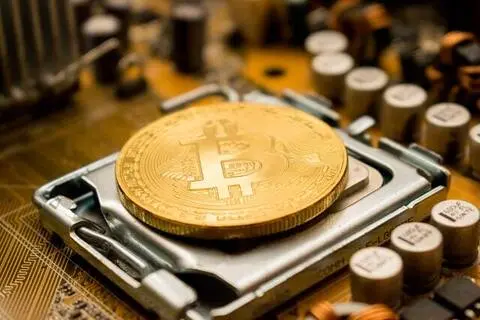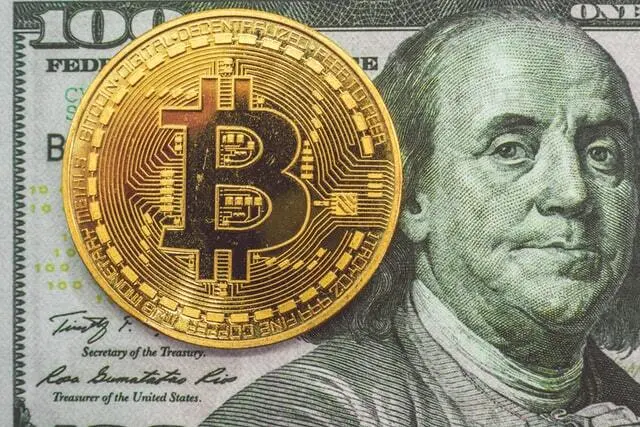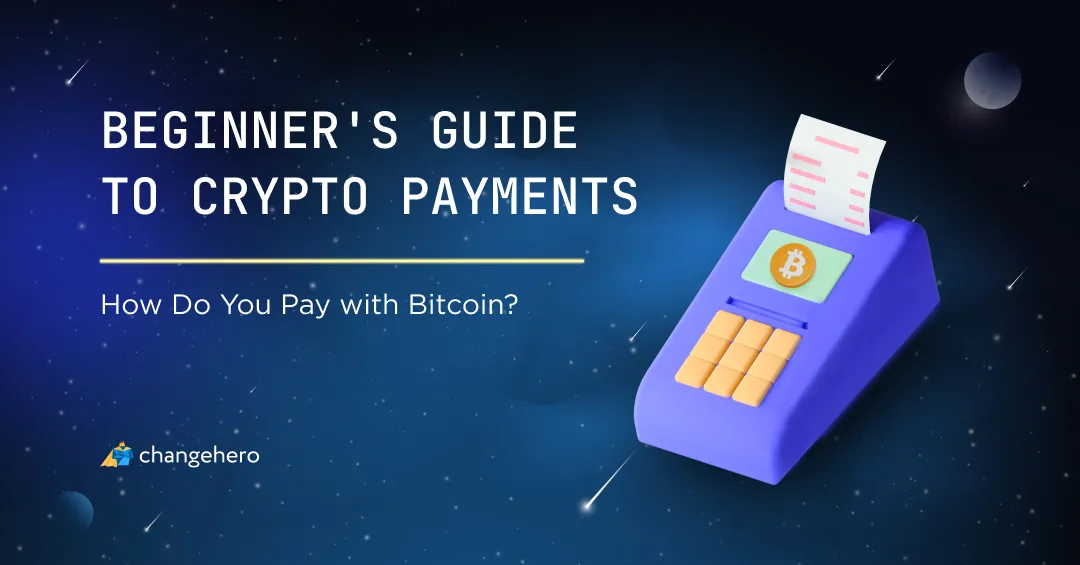
Contents
Bitcoin is the best known cryptocurrency out there for a reason, being both the first and the most adopted one. Still, for newcomers the questions of how it works or why it is blowing up now can be shrouded in mystery. In this Bitcoin beginner’s guide, you will find all the essentials of Bitcoin explained, tips on buying Bitcoin safely and how to put it to use.
Key Takeaways
- Bitcoin is a decentralized digital currency on the blockchain, which enables peer-to-peer value transfers;
- Unlike national currencies, BTC is maintained by miners worldwide with the help of cryptographic software;
- Bitcoin is used for online purchases with thousands of online and offline merchants worldwide. It also can be viewed as “digital gold” thanks to its scarcity.
What is Bitcoin? How does it work?

By definition, Bitcoin (BTC) is both a decentralized digital currency and a distributed ledger secured cryptographically, called blockchain, which it runs on. In traditional financial systems, an intermediary or a central authority maintains the integrity of the records, and we need to trust them. On blockchain, it is done with the help of cryptography and computing, so it is trustless and immutable. What does Bitcoin being decentralized mean? The copies of Bitcoin’s blockchain are stored in nodes that run its software. Since there are thousands of independent nodes that have a copy of the blockchain, rewriting the transaction history is unfeasible. This is further secured because blockchain requires cryptographic work to make records in it. Bitcoin is also pseudonymous. The information about transactions and public addresses can be seen by everyone, so there is a very high degree of transparency about funds accumulation and movement. Public addresses are visible but not linked to any person in real life by default. Instead of accounts, Bitcoin uses the entire history of transfers to track funds, from the moment of being “minted”.
What is Bitcoin mining?
Mining is both a mechanism for BTC emission and security. Bitcoin is designed to be a scarce asset, meaning that there is a hard-coded limit of 21 million coins to ever be mined. Bitcoin uses a Proof-of-Work consensus algorithm, and miners are a crucial part of this process. By running calculations on processors, they decipher the hash function of the next block which will include all the new transactions. Once included in a block, the transaction is on a chain, and a few blocks (the generally accepted number is 6) later it is soundly recorded in it. This is why miners receive block rewards with newly issued BTC and all the transaction fees from the transaction included in a block they discovered. To gradually decrease the issuance rate, every four years the miner reward is slashed in half in a process called “halving”. In May 2020, the rewards were reduced to 6.25 BTC per block. The result of the last mining event can be observed in 2021: the reduced supply of BTC caused its price to soar.
Important features
From the moment of its inception, Bitcoin has received a plethora of updates that serve to improve its scalability and security. All of them went through a process of reviewing and voting by the community.
Multi-Signature
MultiSig, as it is often called, is a feature which is only possible in cryptocurrencies thanks to the cryptographic signatures. On a basic level, addresses that support MultiSig group several network participants and require the majority or all the signatures to approve a transaction. This is a quite useful feature when extra security is needed.
SegWit
An update marked SegWit [Segregated Witness] rolled out in August, 2017, not long after Bitcoin Cash forked off. This was Bitcoin Core’s alternative solution to the scalability problem: instead of making blocks larger, they decided to make transactions take less space. This was achieved by separating the data about the transaction from the cryptographic signature which accompanies each transaction and putting it at the end of the data string. This enabled off-chain solutions to work on the Bitcoin blockchain.
Lightning Network (LN)
Essentially, it is a peer-to-peer side channel that lets participants exchange Bitcoin without dragging the entire transaction history with the coins or paying a large fee every time. When needed, the Lightning Network channel gets closed and the history of transfers that occurred on it gets recorded on to the main chain. It went live in March 2018 but the iterations of it continue to be released and tested to this day.
Taproot
The most recent update to Bitcoin Core’s client included several improvements to scalability and privacy. It also made BTC transactions more programmable. For example, it made multi-sig and Lightning addresses look the same as regular ones. This reduces the ability of outsiders to link addresses to persons in the real world, thus increasing privacy, as well as makes transactions take less data space.
What is Bitcoin’s History?
Writing a Bitcoin beginner’s guide is impossible without starting from the very beginning. And that was a long time ago. The cryptography works that Bitcoin was based on date back to the 90s and it has roots in the cypherpunk community. Many of the developers like Hal Finney, Nick Szabo and Wei Dai who were attempting to create digital currencies before Bitcoin, became its earliest adopters. Bitcoin’s history begins in 2008 amidst the global financial crisis. In August 2008, the domain bitcoin.org was registered and later, in October, a developer under the pseudonym Satoshi Nakamoto published the whitepaper “Bitcoin: A Peer-to-Peer Electronic Cash System”. The genesis, or the very first, block was mined on January 3, 2009. At its coinbase it included a message: “The Times 03/Jan/2009 Chancellor on brink of second bailout for banks”. About a year later, Nakamoto gave up any involvement in the project and Gavin Andressen essentially took over as the man behind the project. In the first few years, the community consisted mostly of developers and enthusiasts, and there was barely any market activity. The Bitcoin Foundation, the closest thing to a public group behind the project, came to be in 2012. Slowly but surely, Bitcoin received attention from more and more investors, and by 2013 substantially gained in price and market capitalization enough to receive attention from the mainstream and regulators. From there on, albeit not without incidents like the Mt.Gox and Bitstamp hacks or regulatory struggles, Bitcoin was becoming more widespread as a means of online payment and storage of value.
Bitcoin Forks
In 2017, at the peak of popularity of Bitcoin, a long-lasting dispute in the community about the scalability issue resulted in a hard fork (chain split). The new branch would become Bitcoin Cash. The point of contempt was a limited size of the block in the original Bitcoin, which led to network congestion and high network fees. The part of the community that formed the Bitcoin Cash community decided to solve this issue by increasing the limit of data that can be included in a block from 1 MB to 8. Later on, in 2018 the Bitcoin Cash community split further into the supporters of this design and those who insisted on removing the block size cap. This fork is now known as Bitcoin Satoshi Vision, or Bitcoin SV (BSV).
How does Bitcoin differ from fiat currencies?

What is Bitcoin used for, instead of fiat? Originally, Bitcoin was designed to become “digital cash” and be used for peer-to-peer payments. It is still used in this fashion with thousands of merchants that would accept it. Over the years, another use case for Bitcoin emerged: since it is disinflationary, some started to use it as a hedge against inflation. There is a fixed supply of 21 million coins that will fully enter circulation only by 2140. Crypto sceptics often dismiss cryptocurrencies as something that is not backed by anything of value. However, most of the world’s fiat currencies are divorced from a source of hard value like gold, too. Cryptocurrencies like Bitcoin are backed by the work put into securing and propagating the network (hence, proof of work). The more electricity is used to maintain the network, the higher the costs miners would seek for the newly minted coins. Decentralized cryptocurrencies like Bitcoin are borderless and accessible by anyone. There is no need to be authorized by any entity to transfer or transact with Bitcoin and it can be done easily across jurisdictions. For the time being, though, the on-chain economy relies heavily on the existing financial system. The value attributed to it is still calculated depending on the price buyers are willing to pay to buy Bitcoin or sell it, usually expressed in fiat currencies.
What is Bitcoin Criticized For?
Environmental Impact
Proof-of-work blockchains are infamous for their high, and growing, energy consumption. At the moment of writing, Bitcoin’s hashrate easily exceeds 160 Exahash/second on a daily basis. It means that the machines working on mining Bitcoin consume about 8 Gigawatts a year. A single transaction releases an estimated 480 kg (1,060 lbs) of CO2 into the atmosphere. It is not only about energy: the wear and tear caused to processors by intensive calculations result in hardware waste. In comparison with gold mining, the carbon footprint of Bitcoin is already 15 times higher. Of course, sustainability concerns are not unheard of in the crypto community. To offset and reduce the impact, efforts to use more renewable energy are made.
Criminal Use
Due to some fundamental design features like immutability of transactions, dealing with fraudulent activity like in traditional financial systems is not possible. In addition, the pseudonymous nature of Bitcoin led to its alleged adoption in criminal activity. Investigations show that prior to 2013 a lot of activity could be connected to the darknet economy. But since the regulatory frameworks started to be introduced, it became significantly harder to use Bitcoin unauthorized. Chain analysis improved significantly since then and the overwhelming majority of Bitcoin transactions have been happening in a more or less regulated space. Another cause of concern here is the rise of ransomware attacks in which the data is encrypted unless a ransom, usually in cryptocurrency, is paid. Despite BTC not being anonymous, it is still used by attackers.
Fraud
Connected with the previous criticism is the continued proliferation of scams in crypto. The reason is the same: the area is not properly regulated yet, and users are less protected. An infamous example of a crypto fraud that made news was the 2020 Twitter hack. A number of high-profile Twitter accounts were hacked and messages promoting a fraudulent scheme were posted on their behalf. This is not to say that there is no chance to be reimbursed for losses if one fell victim to a scam. Law enforcement and cyber security agents these days treat cases of cryptocurrency scamming the same as with fiat money.
Adoption and Regulations
Bitcoin and cryptocurrencies in general are miles away from where they started in early days. Once it was more widespread and institutions started buying in, Bitcoin in particular has become more regulated. Most famously, Bitcoin is adopted as legal tender in El Salvador. This means that de jure it has an equal status to the US dollar in the nation: it is universally accepted for all kinds of transactions. Being regulated sometimes means being taxed, either as property, commodity or a capital asset, depending on the country. For example, in the US Internal Revenue Service (IRS) would consider Bitcoin a capital asset, while in the UK it is taxed as property. Since Bitcoin is not issued by any nation, the international regulation for it is defined by the Financial Action Task Force (FATF). They do not issue laws per se but define guidelines for national anti-money laundering and counter-terrorism financing measures.
Upcoming Technical Updates
Bitcoin is entirely open source and is developed with the help of contributions of developers worldwide. Despite being the most active development team, the developers of Bitcoin are not famous for having a long-term roadmap. Features that are considered for inclusion in a release are called Bitcoin Improvement Proposals.
Blind Merged Mining
One of the features put up for consideration is Blind Merged Mining, a specification of merged mining. This iteration would let Bitcoin miners maintain other networks and side chains without compromising their node resources or payouts. Side chains to a block could support arbitrary rules that would otherwise be impossible on the main chain. It can be used to improve the security of Lightning Network channels, for example.
Hashed Time-Locked Contract (HTLC)
Also known as HTLC, it is a script that allows programmable transactions. HTLCs on the main chain would allow for refunds to be made, and can be used to let open LN channels transfer BTC across each other.
PayJoin protocol
Another proposal is worked on jointly with the developers of wallets. PayJoin will let users pay someone while including their outputs in the transaction, thus enhancing privacy and allowing to group up transactions under the same signature.
Bitcoin on Social Media
When will we hit the top? The 1st #Bitcoin cycle took ~400 days from halving to top in 2013. The 2nd cycle took ~33% longer to reach the top in 2017. If this cycle extends again & takes 33% longer, the top will be around April 2022. The real #Altseason is shortly after $BTC tops.
— Secrets (@SecretsOfCrypto) November 24, 2021
What is Bitcoin’s nearest future? User Secrets tried to predict how this one will unfold. If it does take longer, the bull run can extend well into 2022.
#Bitcoin is here to free us from the domination of the U.S. dollar over the world.
— Sylvain Saurel (@ssaurel) November 25, 2021
The world deserves a neutral and apolitical hard currency. pic.twitter.com/bsE72EugyX
Bitcoin is first and foremost a political statement. With numbers going up, some users seem to forget that the very reason it is happening is what led Nakamoto to create Bitcoin.
Cathie Wood explaining why bitcoin can serve as an inflation hedge. pic.twitter.com/B9ut0X5QVx
— Pomp 🌪 (@APompliano) November 24, 2021
Crypto influencer Anthony Pompliano shared a fragment of Squawk Box in which Cathie Wood of Ark Invest talked about uses of Bitcoin. Not only is it used as a hedge against inflation, it can be a trustless money for those in nations with corrupt governments.
Hey @nayibbukele, Sweden was curious if you could turn-off your Volcano🌋? The central bankers have published new climate goals. Nutrition goals also coming soon.
Europe must ban Bitcoin mining to hit the 1.5C Paris climate goal -Swedish regulators. https://t.co/XGhuPqnp6T — Preston Pysh (@PrestonPysh) November 23, 2021
Euronews reported that Sweden is sounding the alarm on the environmental impact of Bitcoin. However, Crypto Twitter is not impressed with the claims, knowing the strides made to make mining cleaner.
Which Bitcoin wallet is the best?
Before diving into Bitcoin after reading our Bitcoin beginner’s guide, make sure you have a proper cryptocurrency wallet to store it! Finding a wallet for Bitcoin is not a tough task, but choosing an optimal application or device is more important. Here is a list of top recommendations from ChangeHero’s team:
- Exodus (desktop and mobile). Its most prominent features include portfolio tracker, Trezor integration and in-app exchange. You can swap currencies with ChangeHero right in the Exodus wallet;
- Atomic Wallet (desktop and mobile). This product embodies the idea of functionality and is packed to the brim with features;
- Trezor (hardware). If you own a Trezor, you can swap your currencies right in the app with ChangeHero;
- CoolWallet (hardware for mobile). It has all the software wallet essentials like history and balance tracker, with extra features like exchange (powered by ChangeHero) built in;
- Coinomi (desktop and mobile). A reliable and convenient option for any platform.
How can you get Bitcoin?
How to buy Bitcoin instantly?
Getting Bitcoin on an exchange is something that can be recommended to users who already have some experience in trading. You should be ready to dedicate your time to verifying an account or deposit the funds into the exchange’s custody. A more approachable alternative to a trading platform would be an instant exchange platform. On ChangeHero you can buy Bitcoin with a credit or debit card and sell it in just 15 minutes at the best prices after a simple verification procedure.
- Choose the country of residence, amount to buy and currencies. Proceed to the next step;
- Check the currency of purchase and amounts. Provide a BTC address;
- In the next steps, verify your phone address and card info. Pass 3D-secure verification;
- Finally, to make a purchase pass the identity verification with a state-issued ID and a selfie.
What Bitcoin exchange to choose?
Why scour the market yourself when ChangeHero can do it for you? We monitor several exchanges and adapt to the differences between them to provide our customers with the best possible rates. ChangeHero is the go-to place for buying Bitcoin safely because we do not have the custody of your assets at any point: as soon as they are received, the exchange is processed and the result is sent to your wallet address — as easy as that.
- Choose the currencies on the home page, amounts and the type of exchange. Provide your BTC wallet address in the next step and check the amounts;
- Double-check the provided information, read and accept the Terms of Use and Privacy Policy;
- Send in a single transaction the sum of crypto currency you will be exchanging. For a Fixed Rate transactions you have 15 minutes before it expires;
- Sit back and relax. At this step we are doing all the work: checking the incoming transaction and doing the exchange as soon as it arrives;
- As soon as the exchange has been processed, your BTC is on the way to your wallet.
If you ever run into any issues during your swap, our support specialists are always available to help you out in the chat or through the email: [email protected].
A Bottom Line
Back in 2008, Bitcoin became a breakthrough invention: a decentralized digital currency that works trustlessly without third parties. For the mainstream and the economy now, Bitcoin is the face of the cryptocurrency market. Thanks to this current bull run, it became more popular with larger investors and ordinary people alike and even gained legal tender status. Check out our blog for further reading after this Bitcoin beginner’s guide. If you prefer social media, find us on Twitter, Facebook, and in Telegram.
Frequently Asked Questions
What is Bitcoin and how does it work?
Bitcoin is a decentralized digital currency secured cryptographically, or a cryptocurrency for short. It is not issued by any government and does not require a trusted third party to make peer-to-peer transactions.
What is bitcoin actually used for?
Bitcoin has been adopted as a digital currency by vendors and as a novel asset class by investors.
How do I buy Bitcoin?
You can buy Bitcoin on ChangeHero with a bank card or crypto. If you opt for the first way, you will need to pass verification after choosing a currency and providing payment information. If you choose the second option, you can pick the Best or Fixed rate, provide and double check the details with the terms and conditions, and simply send the crypto to exchange to a generated address.
Can bitcoin be used as real money?
From a legal point of view, Bitcoin is equal to real money only in El Salvador. However, most other countries either recognize it as an asset with value or do not prohibit merchants from accepting it.
Why is Bitcoin valuable?
Bitcoin’s value comes from the cryptographic “work”: particularly, the electricity used to create new blocks by deciphering hashes.






